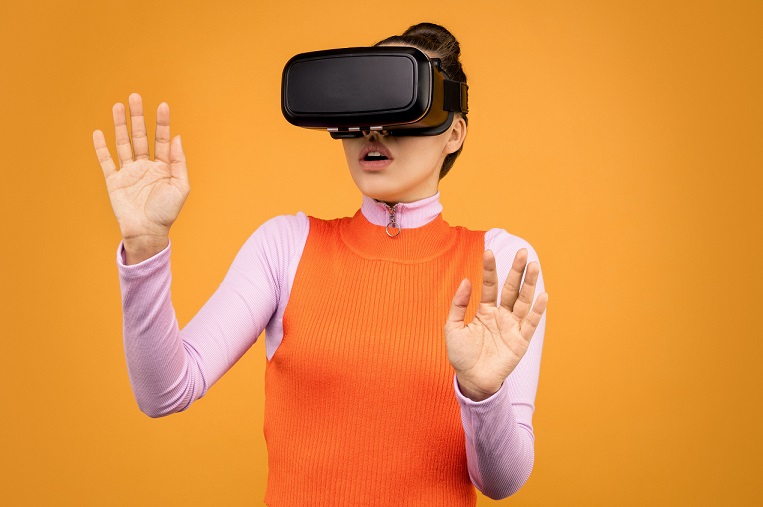How IT has Improved Brand Marketing
Let’s start by painting an ugly picture. One that doesn’t involve ink, paint, or pencil but simply your mind as the canvas and thoughts of a world devoid of information technology (IT). Pretty ugly right?
You see that’s how comfortable the world has gotten with IT and its functions that imagining a world without it is seen as distasteful. Now as an individual, the best knowledge you might have about IT is one that borders on laptops, media, and knowledge acquisition. That’s enough to fascinate us and leave us ever grateful for the beauty of IT.
That shows you how even at the surface level, our use of IT produces fascinating results. It gets better when you consider it on a grander scale. Like how businesses use it in their day to day operations which produces great results, but sadly leaves us with fear for the future of work for humans.

Now that’s not the focus of this post, there are enough resources on the internet talking about different ways IT will disrupt the workforce. So, let’s consider this an appreciation post to IT. Here you’ll see the brilliant ways brands use IT for their own good beyond the benefits you’re used to and even learn one or two things you can imitate on your own level.
What we’ll be discussing will center on IT for brand marketing, especially for consumers. So guys, here are 3 ways IT has helped brand marketing:
– Content Marketing: Since we’re discussing this in the context of brands, one prominent tool used in branding especially when it comes to scaling up has got to be Content Marketing. Little wonder why despite the still growing functionalities of the IT world, content marketing has definitely been affected in ways that have proven to be effective. In recent times, brands have been known to exploit and even modify the power of IT in ways that suit them and this has given birth to more functions.
For instance, we now have AI-generated content and even AI-generated copy. By creating algorithms that match brand needs especially in the aspect of customers, it’s now easier for brands to push out as much content as possible. This means more customer-centric content and in a short time too. Of course, there’s the argument of content like this lacking the human feel and not exactly touching the emotional needs of the audience. But then, this is just the beginning, there are lots of years for brands to work on their IT functions and ensure the pros surpass the cons.
Apart from AI-generated content, there are now chatbots that are more like robotic customer service. In this case, it feels so real as conversations are held in real-time and with the bots actually understanding the human needs and attending to them as best as the algorithm allows.

The problem with all these though is the need for more data to really meet individuals at their right pain points and solve the problems well. But then, we’re being positive here so we won’t be going further on those cons.
– Personalised end-user experience: Away from content, IT has definitely eased up operations within a business especially when it comes to presenting data and findings. For instance, augmented reality and virtual reality are gradually finding a place in our world. Though we might be tempted to just view it from the aspect of gaming, which might just be our first encounter with it, VR and AR are way beyond that. Brands have increasingly used them to deepen relationships with consumers by creating hyper-realistic interactions.

With this digitization has come the birth of a personalized customer experience. By knowing how to tweak the algorithms of a website or adapting it to business functions, customer interactions have taken a better turn.
– Ads and Campaigns: From Pepsi’s 2014 AR campaign to Heineken’s LED interactive bottle, to eBay’s Virtual reality shop, IT has found some innovative uses in the marketing world. Sadly, in 2020, brands that have tried to harness the benefits of IT and replicate on their platforms are just scratching the surface. More like still stuck in the 2010 era and adventures in tech. The integration of cookies and personalized ads are all products of IT.

Another benefit of IT in general is its ease of use and cost management. This is also seen in the way brands use it to save resources. Imagine using tools like HubSpot’s basic marketing plan at about $230 for your brand monthly, a function that can be shared amongst 2/3 employees at a rate definitely higher. Therefore, it’s definitely at the benefit of businesses to find ways to up their game in the use of technology.
You know, the thing about IT is the way it just made the business world get more competitive. Now you don’t just talk about using tech to scale up as a way of marking register, you have to be up to date with the tech operations. Not forgetting to stick to the ethical part as this is also an important part of IT.
This is not to limit the influence of IT in marketing to just content marketing, better end-user experience, and campaigns, but it’s a good place to start.
Finally, in recent times, one big benefit of IT in the business world is Blockchain technology. Makes sense since Fintech is the way now, right? Perhaps we’ll explore this some other time.
But for now, share with us. How have you used IT in your business for good and what new way do you intend to explore it?
Your comments are needed. Till next time, stay digitized.
Written by Blessing Onyegbula.




